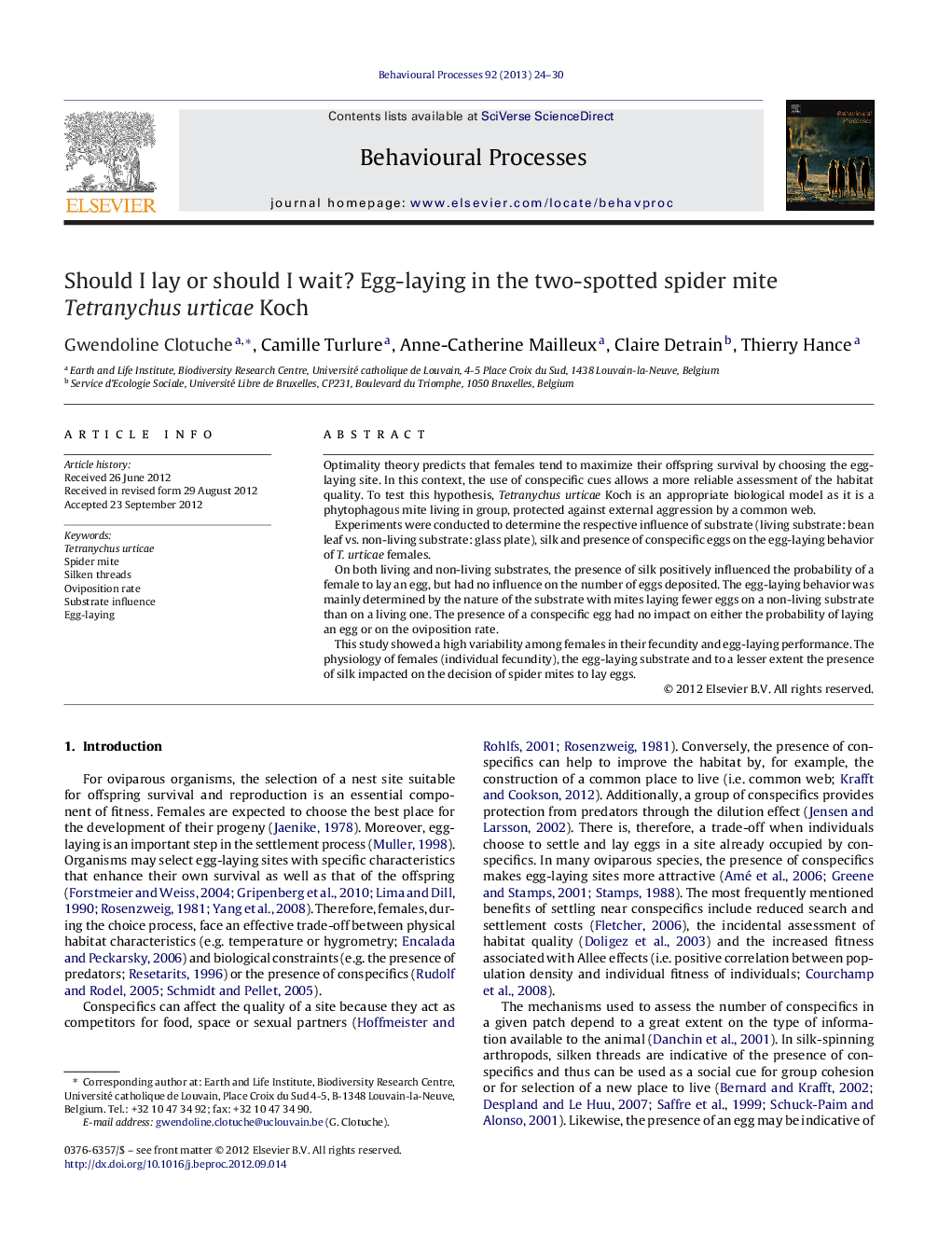| Article ID | Journal | Published Year | Pages | File Type |
|---|---|---|---|---|
| 2426946 | Behavioural Processes | 2013 | 7 Pages |
Optimality theory predicts that females tend to maximize their offspring survival by choosing the egg-laying site. In this context, the use of conspecific cues allows a more reliable assessment of the habitat quality. To test this hypothesis, Tetranychus urticae Koch is an appropriate biological model as it is a phytophagous mite living in group, protected against external aggression by a common web.Experiments were conducted to determine the respective influence of substrate (living substrate: bean leaf vs. non-living substrate: glass plate), silk and presence of conspecific eggs on the egg-laying behavior of T. urticae females.On both living and non-living substrates, the presence of silk positively influenced the probability of a female to lay an egg, but had no influence on the number of eggs deposited. The egg-laying behavior was mainly determined by the nature of the substrate with mites laying fewer eggs on a non-living substrate than on a living one. The presence of a conspecific egg had no impact on either the probability of laying an egg or on the oviposition rate.This study showed a high variability among females in their fecundity and egg-laying performance. The physiology of females (individual fecundity), the egg-laying substrate and to a lesser extent the presence of silk impacted on the decision of spider mites to lay eggs.
► Choice of optimal site for egg-laying depends on plant and conspecific cues. ► We determine the factors influencing the egg-laying decision in T. urticae. ► The presence of silk slightly increases the probability for a mite to lay an egg. ► The presence of an egg does not influence the probability to lay a new egg. ► The egg-laying behavior is mainly determined by the nature of the substrate.
